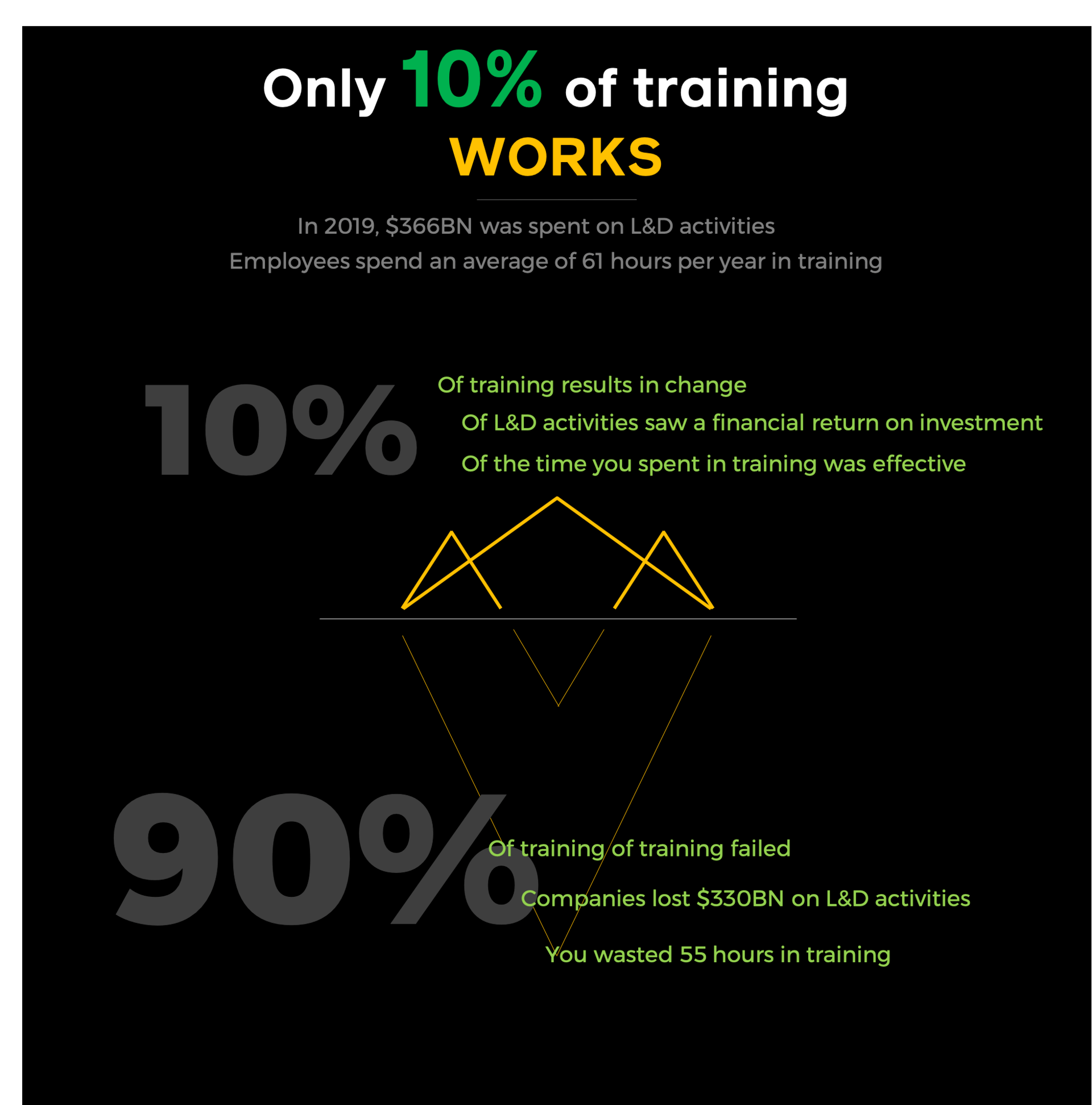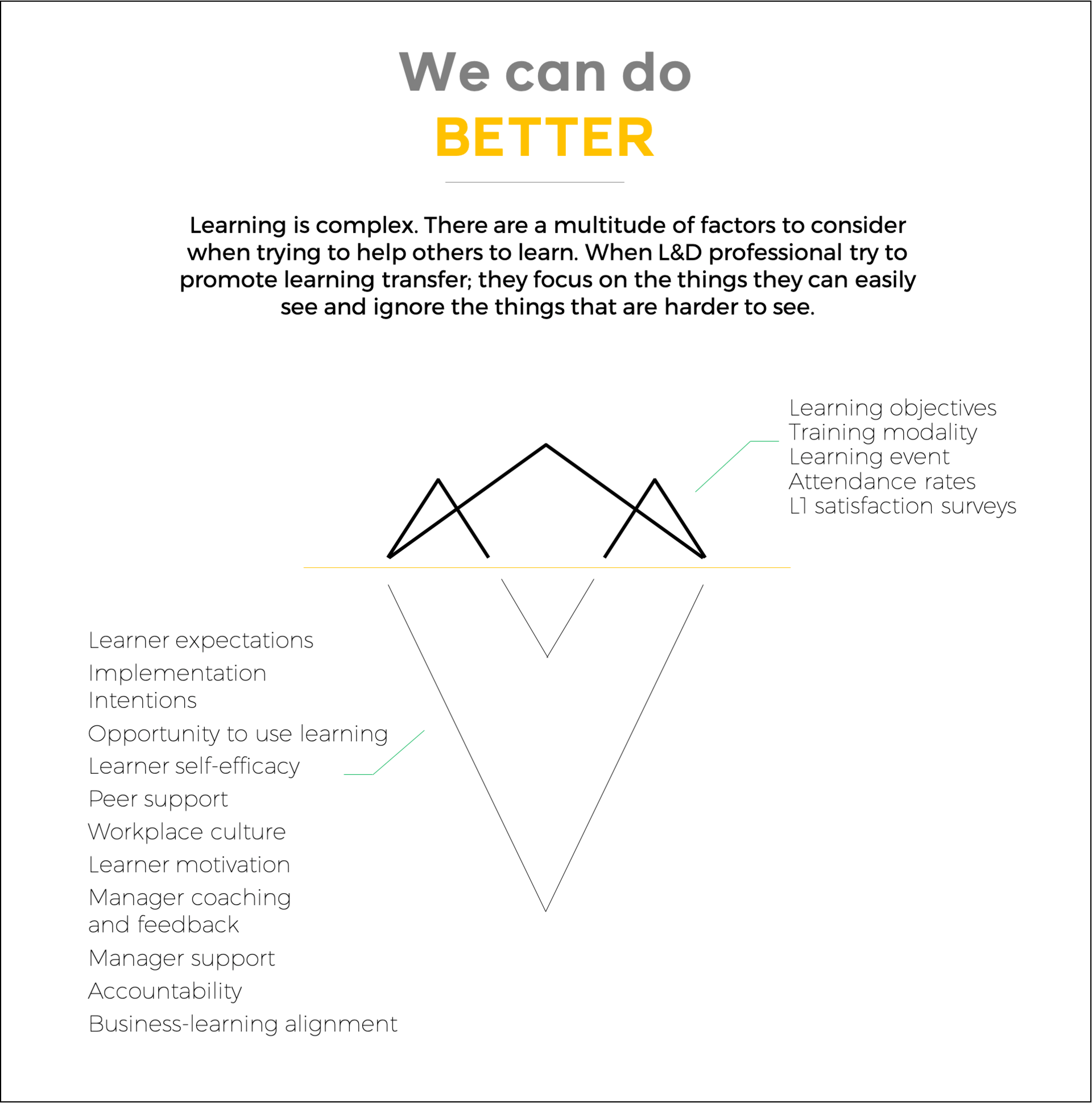Why Your Training Sinks
I wish this wasn't true, but the sad reality is that the vast majority of training doesn't work. Some estimates put the success of training interventions at as little as 10%. Think about that for a minute. If only 10% of training is transferred to a learner's role, that means 90% of all the training you created had absolutely no effect on a learner's behavior. All those hours you spent ideating, brainstorming, researching, designing, and launching were all for very little return.
Companies are investing more and more in L&D, creating larger teams of learning professionals, investing in the latest training creation software, Learning Management Systems, Learner Record Stores, and more. In 2019, $366BN was spent on L&D, that figure will likely increase in the future. This investment of titanic proportions will likely meet the same fate; 10% will achieve learning transfer, 90% will not be transferred and will sink and lie unused at the bottom of the ocean.

The $366BN Iceberg
The issue here is with learning transfer. Learning transfer is defined as the taking of skills and behaviors learned in a training environment and transferring them to one's role. Learning transfer is the goal of all training. The issues with learning transfer faced by L&D can be illustrated using the example of an iceberg. Everyone knows that we only see the 10% of an iceberg that is above the water; there are parallels with the issue of learning transfer. It is estimated that only 10% of all training is transferred to the job. This is the 10% that we can see, the part that is “above the water." As with the 90% of the iceberg that never sees the light of day, 90% of training does not manifest in improved job performance.
Submerged Beneath The Water
When trying to solve performance issues with training, L&D teams have been like a sea captain faced with an iceberg for the first time, transfixed by the easy-to-see elements and totally unaware of the sheer magnitude of the issue hidden out of sight. We have been guilty of focusing too much on the part that is easily visible (LMS signups, learner attendance rates, smile sheets, slick learning designs, etc.) and have ignored the parts that force us to dive deeper in order to understand and influence, like the culture and supporting organizational constructs of learning.
Deep-Sea Thriving
We need to be cognizant that learning is extremely complex, and transferring learning to our everyday work is equally complex. So trying to solve a performance problem by sending someone an eLearning course is unlikely to have the desired results. There is a multitude of factors that influence how someone learns, and learning design is just one.
In order to truly understand the factors at play, we need to dive deeper into understanding the characteristics of learners, such as their expectations, motivation to learn, and volition to transfer. We also need to understand the environment in which the learner performs every day. This is, after all, where the desired behavior change will take place. Things to consider here are the amount of peer and manager support the learners receive, the workload and stress load of the learner, and the amount of time they can dedicate to learning and practice their learning. With that information, we can then design appropriate learning solutions, ensuring the content is relevant to the learner, business, and problem, and provide enough opportunities for learners to actively participate and practice their new skills.

Coming Up For Air
The culture of the company and its attitude toward learning, growth, and performance will ultimately determine the success of your training. This is the part of the iceberg that L&D has left submerged and uninfluenced for so long. Without respect and understanding for this hidden power, the ships (training) we launch will continue to sink.









